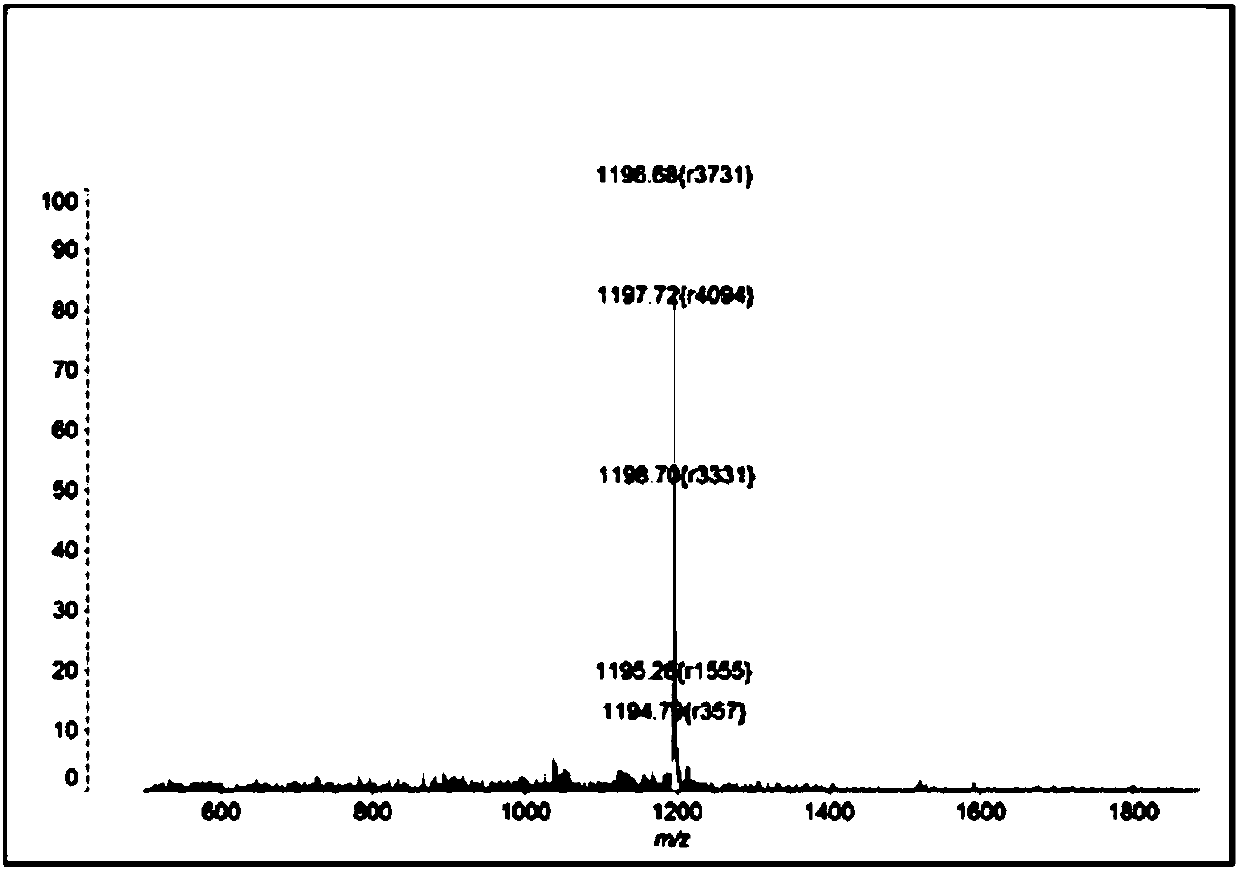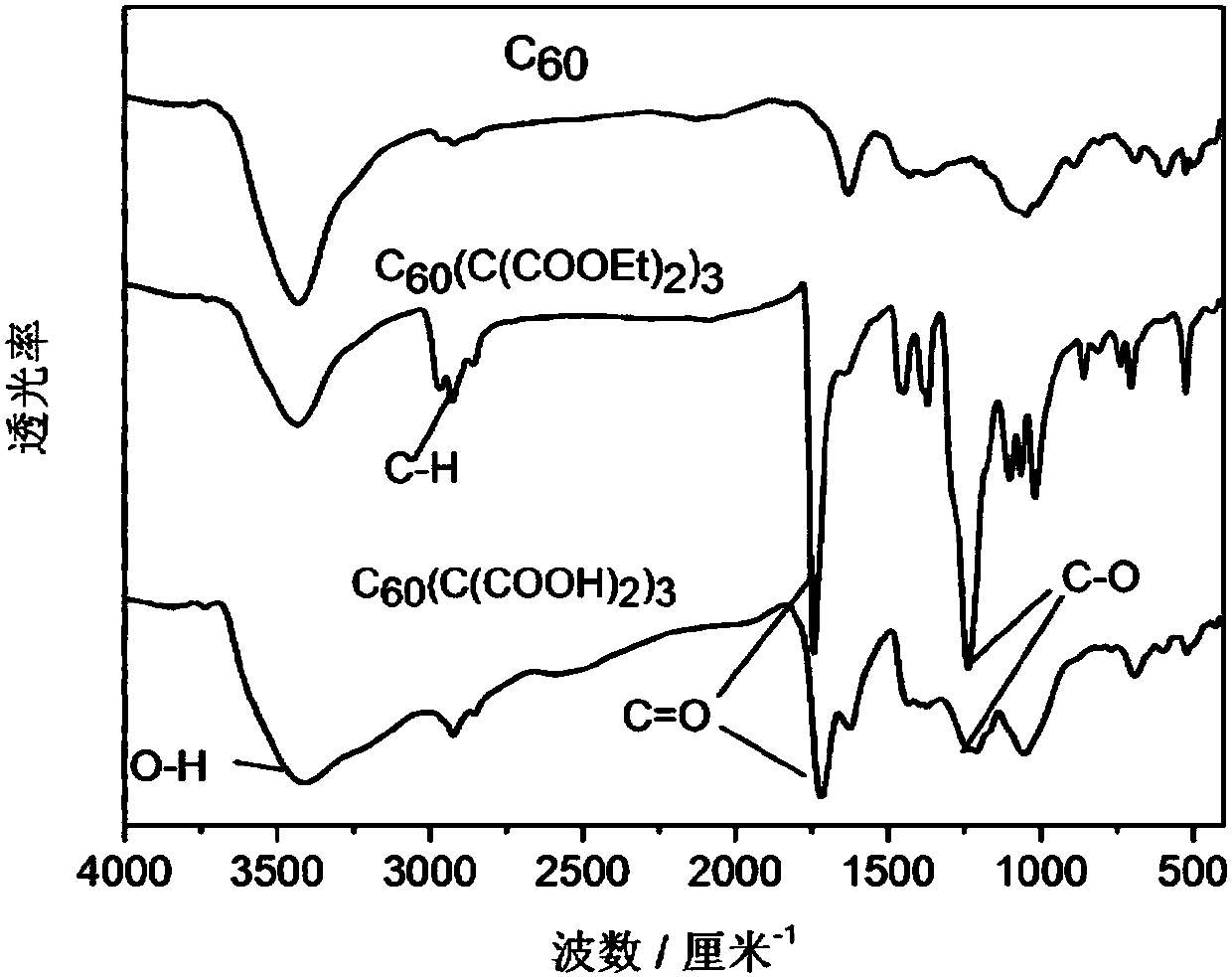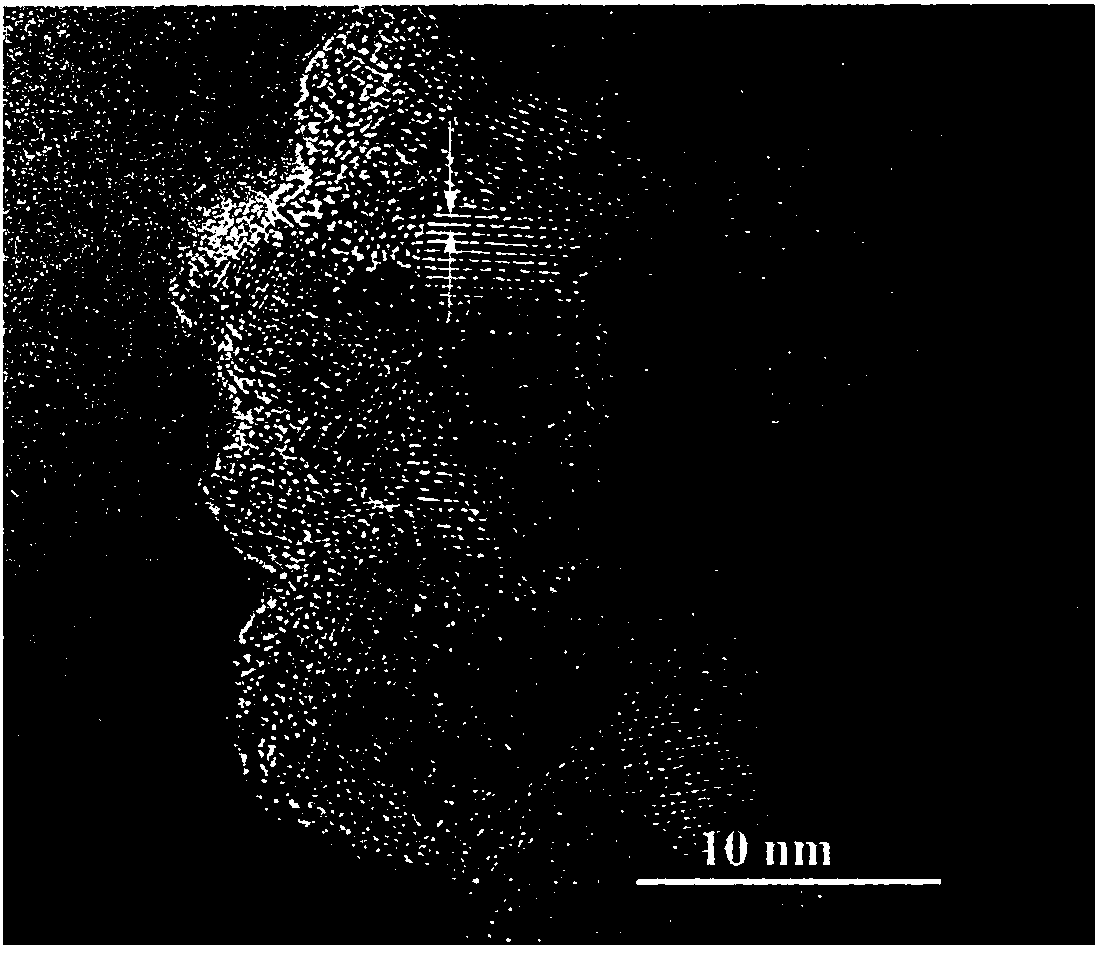Fullerene carboxylic acid derivative/photosensitizer/titanium dioxide as well as preparation method and application
A technology of fullerene carboxylic acid and titanium dioxide, which is applied to the preparation of carboxylic acid nitrile, the preparation of amino compounds by photochemical reaction, chemical instruments and methods, etc., can solve the problems of low light utilization rate, high active electron and hole separation efficiency, and absorption Issues such as narrow light spectrum range
- Summary
- Abstract
- Description
- Claims
- Application Information
AI Technical Summary
Problems solved by technology
Method used
Image
Examples
Embodiment 1
[0072]In the field of fullerene chemistry, one of the most attractive properties is its low recombination energy in almost all reactions, which is of particular importance for photoinduced charge transfer, because it is the key to control the direction of charge transfer and One of the important factors of efficiency. The unique properties of fullerenes come from their highly spherically symmetric three-dimensional cage structure, which makes the electrons of the whole molecule highly delocalized. Therefore, it can accelerate the light-induced charge separation and slow down the charge recombination in the donor and acceptor system. Fullerene has a high electron affinity (2.6-2.8eV) and a low reduction potential (0.61eV), and has multiple lowest occupied orbital LUMOs at the same time, making it a good choice whether in the ground state or in the excited state. acceptor of electrons or energy.
[0073] At the same time, high-performance photosensitizing dyes can be used to l...
Embodiment 2
[0096] PcZn / TiO 2 / C 60 (C(COOH) 2 ) 3 The photocatalytic reduction of nitrobenzene, the steps are as follows:
[0097] (1) The sample (15mg, 0.1mmol) synthesized in step 3 in Example 1 was added to methanol solution (1ml) containing nitrobenzene (0.05mmol), then 1.5mmol formic acid was added, and 30minN was introduced under dark conditions. 2 Finally, under the condition of stirring, the reaction was irradiated with λ>420nm visible light for 8 hours, and the conversion rate and selectivity of the reaction could be obtained by comparing the changes of the integrated areas of nitrobenzene and aniline before and after the reaction by using gas chromatography. The results are shown in Table 1.
[0098]
[0099] It can be seen from Table 1 that under the irradiation of visible light, the catalyst titanium dioxide does not reduce nitrobenzene, and the conversion rate is 0; Benzene is not reduced. After loaded with fullerene carboxylic acid derivatives and metal phthalocyan...
Embodiment 3
[0107] PcZn / TiO 2 / C 60 (C(COOH) 2 ) 3 Photocatalytic mechanism research, specific steps:
[0108] (1) Photocurrent test: the preparation of the working electrode, the steps are as follows:
[0109] The sample (3 mg) synthesized in Step 3 of Example 1 was sonicated in 0.5 ml ethanol solution for 15 min, and then stirred at room temperature for 12 h. Then take 10 μl of the suspension and drop it on a 1cm*1cm conductive glass, and finally dry the coated conductive glass in a 110 drying oven for 12 hours.
[0110] A platinum sheet (1cm*1cm) was used as a counter electrode, an Ag / AgC electrode was used as a reference electrode, and the working electrode prepared in Step 1 of Example 3 together constituted a three-electrode system, and 0.5M sodium sulfate solution was used as an electrolyte for photocurrent testing. Visible light with λ>420nm is used as the light source, and the test is carried out in constant voltage mode. Test results such as Figure 9 .
[0111] Figure...
PUM
| Property | Measurement | Unit |
|---|---|---|
| strength | aaaaa | aaaaa |
| load ratio | aaaaa | aaaaa |
Abstract
Description
Claims
Application Information
 Login to View More
Login to View More - R&D
- Intellectual Property
- Life Sciences
- Materials
- Tech Scout
- Unparalleled Data Quality
- Higher Quality Content
- 60% Fewer Hallucinations
Browse by: Latest US Patents, China's latest patents, Technical Efficacy Thesaurus, Application Domain, Technology Topic, Popular Technical Reports.
© 2025 PatSnap. All rights reserved.Legal|Privacy policy|Modern Slavery Act Transparency Statement|Sitemap|About US| Contact US: help@patsnap.com



